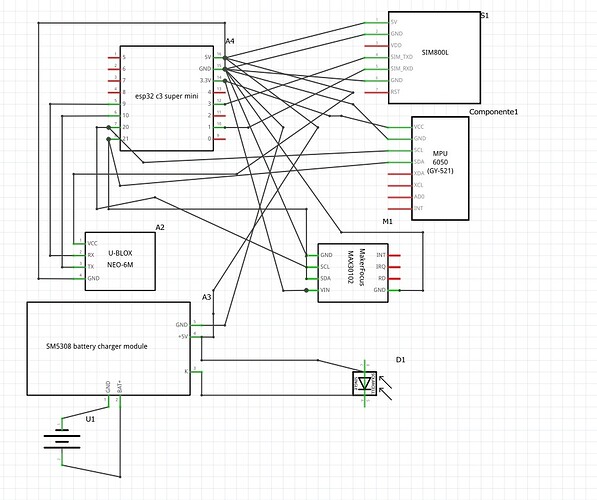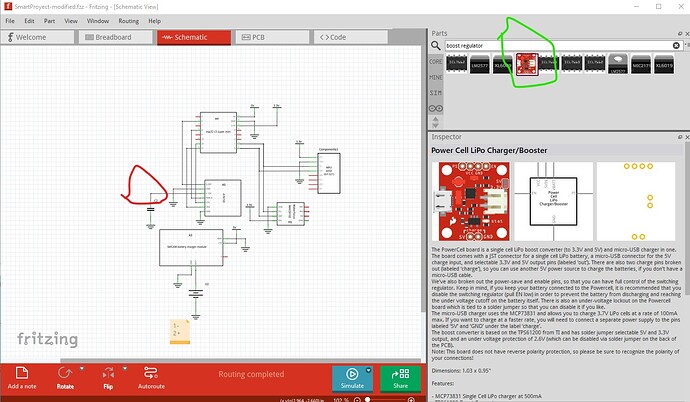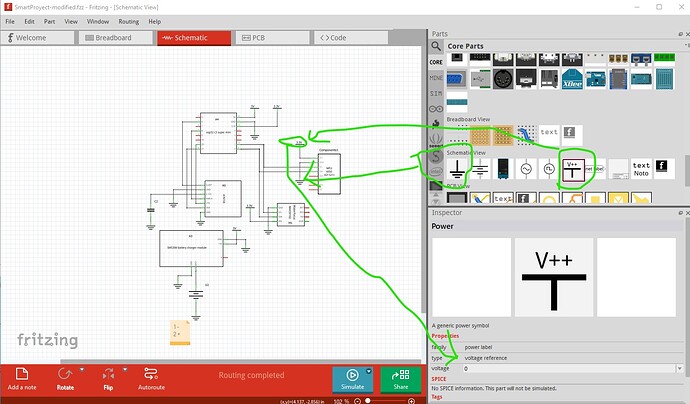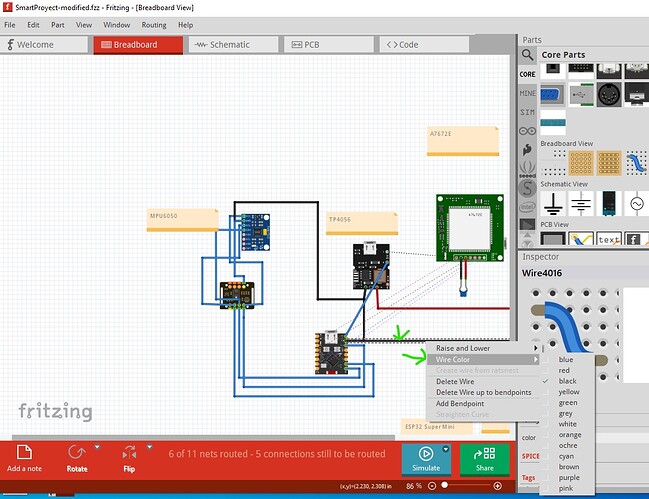Hello everyone,
I’m completely new to Arduino, electronics, and PCB design, but I’m very excited to pursue a personal project. I’m trying to develop a smartwatch that combines various features and electronic modules, all in a compact and functional design, similar to a commercial watch.
Components I want to integrate:
ESP32-C3 Super Mini – main microcontroller with WiFi and Bluetooth
SIM800L – GSM module for communication
MPU6050 (GY-521) – acceleration and gyroscope sensor
NEO-6M GPS – positioning module
MAX30102 – heart rate and blood oxygen sensor
TP4056 – Li-ion battery charging module
Small solar panel – for energy assistance
Rechargeable Li-ion battery
Physical SOS button
On/Off button
4-pin JST connector – to connect the MAX30102 sensor separately from the main PCB, and better position it in contact with the skin
Main difficulty:
When trying to assemble everything on a breadboard or in separate modules, the final design ends up too large to fit into a wristwatch case (my goal is to keep it around 35mm x 40mm). That’s why I thought about designing a custom, double-sided PCB that integrates almost everything except the MAX30102 sensor, which I want to use via a cable.
What I need:
To know if it’s possible to design a single PCB that integrates all of these components (or at least most of them) in a small footprint.
What tools would be best for this (I started with Fritzing, but I don’t know if it’s enough).
Any suggestions, examples, step-by-step guides, or experiences from someone who has done something similar?
Even if there is a company or service that can help design or manufacture something like this, it would be very helpful.
I’m learning everything from scratch, but I’m very committed to bringing this project to fruition. Any help, recommendations, or constructive criticism is more than welcome.
Thanks for reading!



